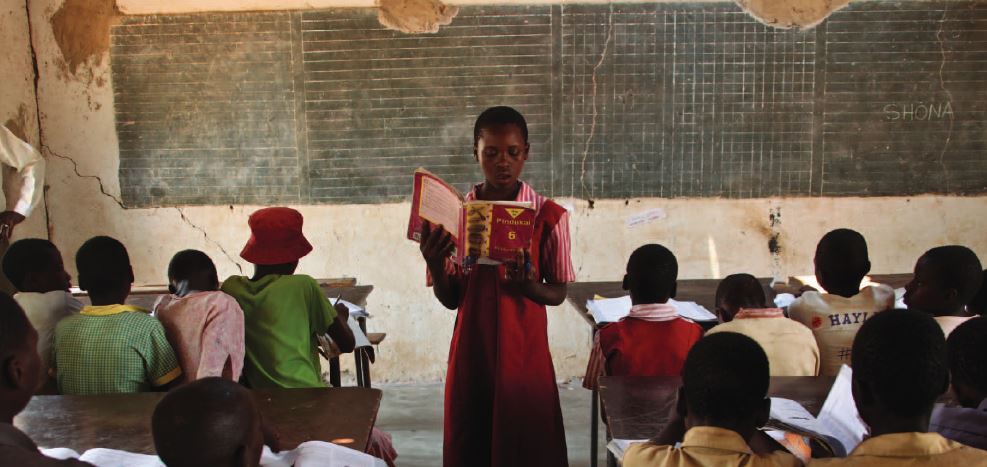Providing education to children, adolescents and young adults is an important element in situations in which education is interrupted due to violence or natural disasters.
Importance of Education
While the traditional components of humanitarian aid (food, shelter and health) remain at the core of humanitarian responses today, providing education to children, adolescents and young adults is becoming an increasingly more important element in situations in which education is interrupted due to violence or natural disasters. In the interest of the psychological wellbeing and the intellectual and personal growth of children and young people, it is imperative that their education not be interrupted, and that it be accessible to often excluded groups, like young children, girls, adolescents, disabled children, refugees and internally displaced people.
 Article 28(1) of the UN Convention on the Rights of the Child (UNCRC) stipulates that education ought to be made available and accessible to all children. The UNCRC is the most widely adopted human rights treaty to date (only Somalia, South Sudan and the United States have not ratified it).
Article 28(1) of the UN Convention on the Rights of the Child (UNCRC) stipulates that education ought to be made available and accessible to all children. The UNCRC is the most widely adopted human rights treaty to date (only Somalia, South Sudan and the United States have not ratified it).
Providing education in emergencies has both immediate and long-term effects. Education can help to restore a sense of normalcy in the lives of those affected by disasters through routine, and specialized programming designed for learning in emergency environments can help alleviate some of the psychological impact on children during a humanitarian crisis. In addition, it contributes to positive long-term change, with implications for future social, political and economic stability. It also supports some of the central goals of humanitarian assistance, fulfilling critical functions beyond learning:
Protection:
Child-friendly spaces such as schools are critical to the protection of children’s bodily integrity during any humanitarian crisis. Keeping children in school, under the supervision of adults and off the streets, can protect them from such dangers as sexual abuse, kidnapping or exploitation -- all of which are commonplace during the chaos of a humanitarian crisis. While this is especially critical for primary-aged children, schools can also provide mothers with temporary safe spaces in which to care for their younger children. Parents whose children attend school are also free during the school day to pursue their recovery and rebuild their livelihoods.
Teaching survival:
Schools provide a key channel through which children and young people can be taught survival skills. In complex emergencies such as situations of armed conflict, this may be protection from landmines; in regions that have been struck by natural disasters, it may be information about basic hygiene such as hand washing. Moreover, children and their communities can be taught skills for coping with and reducing the impact of future disasters.
Provision of social services and community gathering:
Schools and temporary learning spaces can also act as central platforms through which other critical humanitarian interventions can be delivered to children. In these spaces, they can receive reliable health services, lifesaving vaccines, and many children will receive their only daily meal at school. Outside school hours, these spaces can also be used as hubs for the distribution of aid materials to the community.
Core Concerns
An important international actor in advocacy for emergency education is the Inter-agency Network for Education in Emergencies (INEE). The INEE is an open, global network of practitioners, academics, students, NGOs, governments and UN agencies who work together to ensure the right to education in emergencies and during early recovery. It facilitates collaboration, information and resource sharing, and the development of international standards regarding the right to education in emergencies. The Network has developed a comprehensive set of “minimum standards” for education in emergencies, to guide both policymakers and practitioners and continues to play an important role in highlighting the critical role of education in humanitarian response.